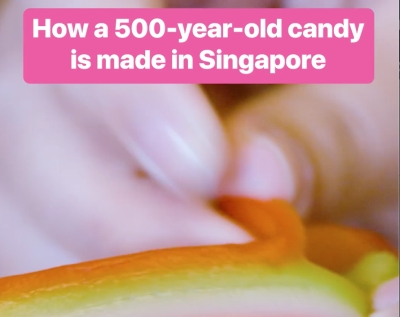PETALING JAYA, July 31 — Business Insider’s Food Insider account on Instagram has Malaysians, Indonesians and Thais up in arms after its latest video post was titled “How a 500-year-old candy is made in Singapore” in a feature on kuih lapis.
Many decried the label of a sugar confectionery for the sweet treat, as well as its purported reference to Singapore, despite the video itself not making any claims to kuih lapis‘ country of origin.
Instagram user jesskhandhar posted, “1. Get the origins right. 2. Get the name right. This isn’t candy. Check definition of candy,” while mumtazmyummy wrote, “candy???? c’mon insiders you can do better to post”.
Many agreed with the sentiments, but the backlash didn’t stop there with even more were seen unhappy over the kuih lapis association to Singapore.
ridian nasution meanwhile offered a lengthier explanation, “Singapore??? this is baba nyonya food. From the Chinese that migrated to Melaka. After claiming the malaysian/thai durian they bought and resold as Durian Singapore, now they wanna claim the kueh baba nyonya”Meanwhile, user norceu_noragabe said, “Kue Lapis berasal dari Negara Indonesia yang kaya dengan makanan dan adat budayanya” (kuih lapis originated from Indonesia which is rich with food and its culture).
“Candy???? And not made in Singapore, native of south east Asia and for Malaysia and made famous by Baby Nyonya’s!!!! and other countries have their own version!,” argued jennjoni1983 as whentimedoestellyouareit echoed the sentiment a little more harshly with, “I believe it’s a Malaysian dessert. Lol. Singapore is only 59 years old.”
Kuih, as defined by Wikipedia, is derived from the Hokkien and Teochew word that is a broad term for bite-sized snack or dessert commonly found in Southeast Asia and China that may include items that would be called cakes, cookies, dumplings, pudding, biscuits, or pastries in English and are usually made from rice or glutinous rice.
While regional neighbours usually lay claim to a dish and contest claims from each other, the comments were united in insisting Singapore was the only one in this case, that had little basis of any claim to the origin of kuih lapis.
“Salah kyknya bukan permen, kue ini biasa ditemuin di Indonesia, Thailand atau Malaysia jg. Jgn oveclaim pny singapur,” (It’s wrong as it’s not candy, this kuih is usually found in Indonesia, Thailand or Malaysia. Don’t overclaim it saying it belongs to Singapore) insisted raddiyaa_.
If that wasn’t enough, the 51-second video also got more flak for its less than traditional choice of colouring.
“In the past, makers would use plants for natural colouring, like butterfly pea flowers for blue shades or pandan leaves for green,” it was stated in the video.
In reference to the focus on the practise of the particular establishment highlighted, it continued, “But today, Edmond uses store-bought dyes to get each layer to the perfect shade of red or green.”
Instagram user dessertexchange shared what was also a point of contention for many, saying, “You lost me at that they changed their coloring from natural to synthetic lol”.

